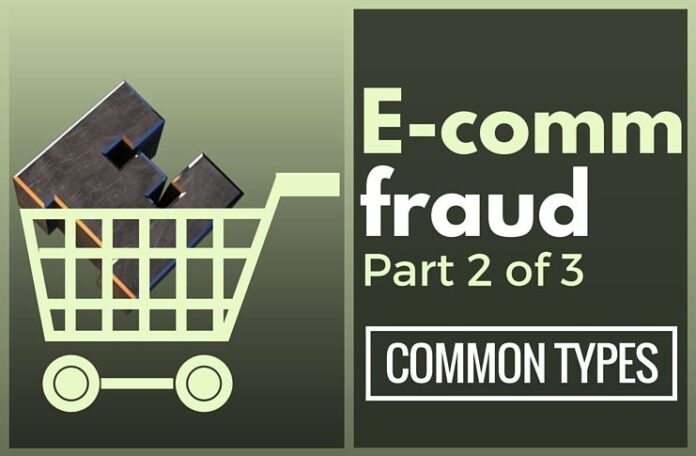
In the earlier part, we had introduced what causes e-commerce fraud and growth initiatives that invite fraud. In this section we discuss the common types of frauds and talk a bit about measurements and the required paranoia.
Instances of E-commerce fraud in online marketplaces, Radio Taxi companies and other start-ups
[dropcap color=”#008040″ boxed=”yes” boxed_radius=”8px” class=”” id=””]I[/dropcap]n this section, we cover the details of the most common kinds of E-commerce fraud in marketplaces and Taxi-On-Demand companies where you book a cab from your mobile. These common frauds are seen in other e-commerce companies as well and could be easily applied to them.
Buyer is the Seller
As is seen in e-commerce marketplaces and mobile powered Taxi-On-Demand companies, supplier side incentives are given on sale price to increase sale volume and supplier retention. Fraudulent suppliers try to buy their own inventory and keep the incentive. Such suppliers often deploy their proxy customers or use their alternate identities to purchase items from them on the marketplace. These customers return the item back to the supplier who keeps the inventory and the supplier also gets the incentive from the e-commerce platform. In the Taxi business, this is commonly seen where a cab driver does his own booking.
Multiple identity
[dropcap color=”#008040″ boxed=”yes” boxed_radius=”8px” class=”” id=””]T[/dropcap]his is a very big problem in the e-commerce industry. We call this the “Identity-crisis” issue in e-commerce. In order to make avail of a promo code, a user may choose to create multiple identities on a retail e-commerce site and “stock up” and over use a limited promo code. Sometimes, smaller towns see an inordinate amount of new user creation and purchases by these new users. This is a very big problem. Facebook and to some extent Google gave been very good trying hard to keep one account per “real” user.
Hoarding/Bulk buying
Small businesses especially in Tier-2 and Tier-3 towns keep an eye out for deals on popular retail e-commerce site. The intent of subsidies is to improve existing customer behavior and acquisition of new customers. Hoarders try to take advantage and buy in bulk. In this kind of fraud, a simple check of minimum number of items per user does not suffice because of the “multiple identity” problem mentioned in the earlier section.
Stocking out a competitor
[dropcap color=”#008040″ boxed=”yes” boxed_radius=”8px” class=”” id=””]I[/dropcap]n e-commerce platforms, only one supplier (based on past performance and user ratings) gets to be the supplier on the website for the product. This leads to “bogus purchases” made that stock out a competitor and are shipped to no-where bogus shipping addresses. This is a very serious problem because the e-commerce site bears the cost of reverse logistics for the given items purchased. Often such purchases are made by a set of few users buying this item from the targeted supplier and shipping to random addresses. Such random addresses are often bogus and do not exist in real life. The e-commerce platform pays a heavy price of losing good suppliers like this. There are long term disadvantages of losing good suppliers consistently. While it will be great to identify the “jealous supplier” trying to target “the good supplier”, it may just suffice to know when an attack of such sort is happening and stop it soon.
Collusion of Suppliers
When Demand Surge Pricing was introduced by some taxi companies in India to counter the demand-supply gap, some cab drivers soon learnt that they could co-ordinate and log into their mobile phones for taking up new orders one-at-a-time and thereby keeping the demand-supply gap, thereby looting the customers and making a killing. Such frauds are highly co-ordinated and very intelligent. Rule based methods where a driver cannot avail of surge pricing unless he had already worked for at least 2 hours in a logged in session have helped mitigate the issue to a large extent. A lot of background processing could also be used to look at the probability that the a group of cab drivers have been in the same geo-hash code at the same time for what is “more than a digestible” can help reprimand drivers and apply punitive damages.
Courier & Logistics Fraud
[dropcap color=”#008040″ boxed=”yes” boxed_radius=”8px” class=”” id=””]A[/dropcap]s touched upon earlier courier fraud is done to earn money out of reverse logistics. There is no easy method to identify this type of fraud. Again an anomalous behavior and sudden spike can be used to identify order velocity in a region and temporarily disallowing cash-on-delivery when such a fraud has occurred. Fraudsters will be reluctant to give out their credit or debit card numbers in fear of coming under surveillance.
Customer (Demand) Fraud
Recently a newspaper carried an article about fraudsters in a city in Punjab who purchased electronics equipment from a famous e-commerce site, removed some expensive original parts replacing them with old parts, and then returning this item. This is clearly a fraud and can be penalized if proved with evidence in a court of law.
Other customers may not do fraud but may consistently loot your system by exploiting your promos and sometimes multiple times so as to be a sink for the company. Recall that the company may choose to not do further business with a customer which it thinks is not worth retaining. People often forget that a company is NOT the court of law and does not have to strictly follow “Innocent until proven guilty” and could choose to block such customers.
Converting Black Money into White (Menace of Cash on Delivery)
[dropcap color=”#008040″ boxed=”yes” boxed_radius=”8px” class=”” id=””]C[/dropcap]ash-on-Delivery can be used as the preferred mode of payment by a user of an item that he does not want, keep the product for four days and then return the item purchased thanks to the “No questions Asked” policy. The customer may have paid cash on delivery at the time of purchase but at the time of return, the user may choose to transfer the money to his wallet and from his wallet to his bank accounts thereby converting black to white. This creates a big mess for the legal and police authorities to catch those who are converting black money to white. Worse, imagine a bunch of counterfeit currency printing fraudsters who manage to use cash-on-delivery to legitimize their counterfeit and also circulate this in India. All we can imagine is that laws to deal with such crimes need to be so deterrent on the customer that he will be dissuaded from taking the risk.
Metrics, Incentives and Objectives
Measuring and predicting how an incentive will work and pan out is a non trivial exercise often overlooked by early stage high paced e-commerce start-ups. Luxury of running a thorough simulation is non-existent due to competitive time pressures. However, there are many tools available to “test the waters” but it requires both Engineering, Statistical, Data Science and Marketing rigor.
Some of the mistakes made by companies can lead to bad and sometimes disastrous outcomes. Experienced data scientists have often raised concerns that fall on deaf ears. Even before tests and simulation, numerous smaller steps can be taken with caution. Listed below are just some of them.
Competitive incentives without objective
[dropcap color=”#008040″ boxed=”yes” boxed_radius=”8px” class=”” id=””]S[/dropcap]ometimes compulsions of a competitive landscape forces companies seeking funding to take obnoxious and toxic decisions. There may be no sensible objective. “Kill-the-competitor” is all that could be on the mind. Burn rate is the only parameter looked at whereas fraud (exploitation by a few) is generally neglected. System duct-tapes by Software Engineers and Product and Business teams via inadequate rule-based limits often make the system messy and hard to maintain. Inadequate follow up of tracking and reporting of these impromptu incentives become toxic in the long run.
“Just because your competitor is doing something disastrous, do you need to follow suit? If you cannot match in the same way, explore other ways! Sometimes the competitor does things to entice you to make the same mistake. After deciding the incentive insure it is at least configurable enough to be turned off.”
Too many incentives – who knows what incentives and promos are active
[dropcap color=”#008040″ boxed=”yes” boxed_radius=”8px” class=”” id=””]T[/dropcap]he e-commerce space in India has high churn and attrition. Incentives designed by a former marketing executive got into the system and just “stayed there”. No one knows how this incentive was coded into the system and the engineer who coded it in has quit the company as well. Who knows how this all works?
“Ensure that a few people in your company unambiguously know all the rules that prevent exploitation of your marketing/ on-boarding incentives word to word. Ensure that the implementation is configurable to avoid code change.”
Non time-bound incentive – Do not promise something you cannot sustain!
Much too often one has seen deals being given on sales or taxi trips without due thought process of how it could be misused. When such deals are pulled out, consumer confidence drops and consumers start looking for alternatives. One cannot buy loyalty because of past deals.
“One radio taxi company made a ridiculous incentive for demand acquisition by charging customers a ridiculously low flat fare for the first five kilometers of trip without realizing that it was not the demand that was ever a problem but instead his supply was! The number of unfulfilled cab requests that this company had was thrice that of completed trips. The incentive not only brought in more demand that they could not fulfill which hurt consumer confidence but they also saw that twenty percent of their trips were less than one kilometer or less than five minutes suggesting that drivers who got per-trip-incentive were making false bookings for themselves thereby burning VC money by committing fraud.
Know your demand-supply gap first before you complain it is the chicken-and-egg problem.”
Choice of wrong metrics
[dropcap color=”#008040″ boxed=”yes” boxed_radius=”8px” class=”” id=””]T[/dropcap]he choice of wrong metrics of measurement is crucial. Are increase in transactions and consequently revenue the only metrics? Wouldn’t median time for returning customer’s transactions & rate of increase of new customers be of equal importance? The latter two will also help you keep a tab on pilferage.
Inability to be suspicious
Suspicion is best illustrated by the couple of examples below.
Example 1: If you see a sustained increase of new customers of 25% day over day for two months, you’d be silly to:
-
Blindly assume that this is a good sign
-
Assume that every city/region is near the 25% mark for new customers.
In the case of the new-customers-acquired spread, you must question the standard deviation and see if some certain top 20 cities/regions have a lower likelihood of attaining so many new customers.
Example 2: If your bookings via iPhone has risen by 2% nationwide in the past 2 weeks and that you have seen a linear or better growth, it is again very critical for you to question and see if the rise is concentrated in a few cities or is the rise uniform?
If one applies Binomial Testing with p-values based on national expected values to regional city values, one can see the probability of attaining such high number for values in metric. This can lead to suspicion and hence seeking answers to be in better control of your business.
Percentage is not always a good metric.
We leave the reader to explore more about Binomial testing with a simple question:
Which has higher probability for the cases below both of which are 50%?
- Getting 5 sixes in 10 rolls of an unbiased dice
- Getting 15 sixes in 20 rolls of an unbiased dice
[dropcap color=”#008040″ boxed=”yes” boxed_radius=”8px” class=”” id=””]L[/dropcap]ong gone are the days were unscientific (non Statistical) methods of measurement can be afforded in decision making. Let the data speak for itself. Sentences that begin with “My hunch is…” better be backed with data to the most granular levels. Unless you question, you will not learn. Explaining an observation with causal reasoning is also very vital.
“Check the burn rate. Isolate suppliers who have seen surge in sales. Aggregate numbers rarely give you the true picture of what is happening. Define metrics based on ratios and normalize the data to make different data points comparable. You may have a fancy MBA but if you are not paranoid and data savvy, you need a data scientist or a sharp business analyst whom you need to listen to and cross question about various metrics and their historical values. Chart a happy-day yet realistic scenario for these metrics and contrast your daily metrics with this chart.”
Do not release an incentive you cannot measure and monitor
Self styled statisticians are a dime a dozen. Your Big-Data Engineer or Product Manager may not be the best folks to answer you accurately. There are sound inferences that one can make with A/B test methods to measure growth which with due process can also be modified to measure the extent of exploitation. Always have a statistical estimate of how your campaign is expected to perform. If you are surprised with the success of the results of your incentive, be paranoid and work to have the fraudsters caught.
- Supreme Court rejects plea to tally all VVPAT slips with EVM votes; says ‘no going back to paper ballot’ - April 26, 2024
- US report citing human rights violations is deeply biased: India - April 25, 2024
- Kotak Mahindra Bank shares tank 13%. Market Cap erodes by Rs.37,721 cr post-RBI action - April 25, 2024










